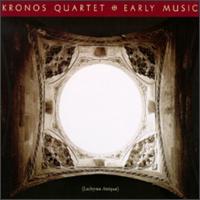
Takejujo-no namazu narikeri."
-- Basho
"According to Japanese legend, a big catfish living underground shakes itself and causes earth tremors. color woodblocks -- innovative printing technology at that time -- called Earthquake Catfish Pictures, namazu-e, were circulated after the Ansei Earthquake in 1855 ... Many girls were killed by the Ansei Earthquake at New Yosiwara (notorious for public prostitution at that time). The catfish, captured by the local people, says "I am delighted the beauties (high class educated prostitutes) clambered on my back. If any more clamber over me, I may tremble again". Carpenters and fire-fighters, who profited by the earthquake, run to the site and beg for the life of the catfish ...
Another woodblock print depicting the era's Four Fearful Ones: earthquake, thunder, fire and old fathers in that order, all comically personified. Sarcastic remarks were often made about those who gained from earthquakes and against governments that were either incompetent or unable to deal with the disaster. it was cynically believed earthquakes occurred to punish politicians and in some prints revolutionary catfish are helping innocent citizens from collapsed buildings".
-- from Earthquakes and Animals by Motoji Ikeya

"Shiun’s 'Nihonbashi Street Near Matuzen' portrays the vulnerability of Western architecture. Placed prominently in the foreground of the print a partially collapsed brick building lies in ruin, its steel re-enforcements bending towards the ground like knotted roots. As demonstrated through these prints, the destructive force of the earthquake primarily affected the Western style architecture, while the traditional Japanese buildings were susceptible to the fires that followed the seismic shocks. These prints, therefore, communicate that not any one style of architecture was immune to the catastrophic earthquake."
-- The Visual Culture of an Earthquake Nation

"The three major earthquakes we have discussed sparked prolific productions of woodblock prints. Because their production could be very quick and abundant, these prints were used as the primary visual medium illustrating contemporary discourses about cultural and political ideologies and structures, often subversively. That the earthquakes were seen as validating emerging Japanese ideologies is not surprising, however, post earthquake prints suggest that earthquakes (as a primary example of natural disasters) also shaped those ideologies. This is seen in the Tokugawa era prints through their emphasis on the redistribution of wealth and power following the Ansei Earthquake, as Japanese discourse about national identity was began to form in the Meiji era. The Nobi Earthquake prints presented a critique of the newly-adopted Western technologies that could not withstand the seismic shocks. Taisho era prints revived this critique within the new discourse of how to express that identity."
-- The Visual Culture of an Earthquake Nation


関東大震災 : Kantō daishinsai "1923 Great Kantō Earthquake"
"The Great Earthquake "struck the Kantō plain on the Japanese main island of Honshū at 11:58:44 am JST on September 1, 1923. Varied accounts hold that the duration of the earthquake was between 4 and 10 minutes.
The quake had a magnitude of 8.3 on the Richter scale, with its focus deep beneath Izu Ōshima Island in Sagami Bay. It devastated Tokyo, the port city of Yokohama, surrounding prefectures of Chiba, Kanagawa, and Shizuoka, and caused widespread damage throughout the Kantō region.[1] The power and intensity of the earthquake is easy to underestimate, but the 1923 earthquake managed to move the 93-ton Great Buddha statue at Kamakura. The statue slid forward almost two feet.[2]
Casualty estimates range from about 100,000 to 142,000 deaths, the latter figure including approximately 40,000 who went missing and were presumed dead. According to the Japanese construction company Kajima Kobori Research's report of September 2005, there were 105,000 confirmed deaths in the 1923 quake."
-- Wikipedia : Kanto Earthquake



"The extent of the damage created was such that it was seen as an opportunity for the central government to reconstruct Tokyo as both a modern city and imperial capital. The more grandiose aspects of the plan which followed were however soon watered down, although vast resources were put into reconstruction. Its success in transforming central Tokyo boosted the image of city planning and encouraged an entire generation of young planners who were to staff the planning agencies throughout Japan over the next decades. One other distinctively modern aspect of the inter-war Japanese planning system was the emergence of a garden-city vision, in direct emulation of Ebenezer Howard's garden-city movement in the UK. Another way in which the European experience influenced Japanese planning practice was to be seen in proposals for metropolitan green belts to restrict urban growth and provide green spaces for urban dwellers although, as in Britain, consideration of defence against air attack lent political weight to the green belt movement."
-- 'Tokyo: the mobile megalopolis' from 'Cities in Transition'. Nirmala Rao.












No comments:
Post a Comment